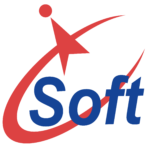-
-
It’s a goldmine of real-world data for those building secure systems.
-
With the right ethical approach, it can boost privacy tools, train AI models, and improve cybersecurity frameworks.1. 💡 Introduction: Breaking the Dark Web Stereotype
-
Mention that while the dark web is infamous for criminal activity, it also serves as a rich, underexplored space for researchers, security experts, and developers.
-
Stats: Over 2.5 million users connect to Tor daily (Tor Metrics, 2023).
-
Example: Even Facebook has a dark web version to improve access in censored countries.
2. 🔐 What Is the Dark Web?
-
Definition: The dark web is a hidden part of the internet, only accessible via special tools like Tor or I2P.
-
Layers of the internet: Surface Web > Deep Web > Dark Web
-
Legal vs. illegal: Dark web ≠ illegal by default. It depends on how it’s used.
3. 🧠 Legitimate Uses for AI and IT Professionals
a) Cyber Threat Intelligence
-
Track ransomware campaigns, phishing kits, and zero-day exploits.
-
AI use: Train LLMs to detect hacker slang, fraud indicators, or scam behaviors.
b) Privacy and Security Testing
-
Use the dark web to test how easy it is to find leaked credentials, personal info, or source code.
-
Example: Create a bot to alert if an employee’s email appears in a dark web dump.
c) Malware and Botnet Research
-
Analyze malware samples and patterns of distribution.
-
Use for AI: Train neural nets to detect and classify malware by behavior.
d) Dark Web Crawling for Data Mining
-
Crawl forums, markets, and paste sites (legally!) to gather unstructured text.
-
Application: NLP models that detect extremist content, fake news, or social engineering patterns.
e) Training Ethical Hackers
-
Many cybersecurity courses (e.g., CEH) include exposure to darknet data sources for realism.
-
You can create realistic honeypot data or traffic patterns for AI intrusion detection.
4. 🧰 Popular & Ethical .onion Sites for Tech Users
Name Use Case Onion Address Ahmia Dark web search engine http://msydqstlz2kzerdg.onion/ZeroBin Encrypted pastebin http://zerobinqmdqd236y.onion/SecureDrop Anonymous whistleblowing http://secrdrop5wyphb5x.onion/Tor Metrics Stats on dark web usage http://metrics.torproject.org/PrivacyTools Privacy/security tips/tools http://privacy4u4v4pmj.onion/Add note: Always access via Tor + VPN for anonymity and safety.
5. ⚙️ Setting Up a Safe Dark Web Research Lab
Tools to Use:
-
Tor Browser
-
Tails OS (live OS with Tor preinstalled)
-
Qubes OS (for compartmentalized environments)
-
Air-gapped machine for malware testing
-
VPN + firewall to prevent leaks
Safety Tips:
-
Never download unknown files.
-
Never use personal info or emails.
-
Avoid JavaScript-heavy pages (can deanonymize).
6. 🧪 AI Projects That Use Dark Web Data
Project Description DarkBERT A dark web-trained LLM created for threat intel and text analysis. MalNet Dataset of malware traffic for training intrusion detection AI. Cyber-All-Intel Open-source threat intelligence using dark web crawlers.
7. 🌍 Ethical Considerations
-
Accessing dark web is legal in most countries, but:
-
Viewing illegal content is NOT.
-
Collecting data for AI training must respect privacy laws (e.g., GDPR).
-
-
Focus on research, education, and defense – not exploitation.
8. 🚀 Final Thoughts: Why IT & AI Experts Shouldn’t Ignore the Dark Web
-
-
Warning Before Using Dark Web
-
Use Tor Browser (https://www.torproject.org)
-
Use a VPN
-
Do NOT login with personal accounts
-
Do NOT download files unless you’re on a secure, isolated environment
-
Only browse legal and research-focused sites
🔍 Useful .onion Websites (Educational/Research/Tech-Safe)
Here are a few onion sites commonly used by ethical researchers and IT professionals. Note that these are not illegal, but you should still verify their safety and legitimacy before use:
| Name | Purpose | .onion URL (access via Tor) |
|---|---|---|
| SecureDrop | Anonymous whistleblowing for journalists | http://secrdrop5wyphb5x.onion/ |
| PrivacyTools (mirror) | Privacy/security tools and guides | http://privacy4u4v4pmj.onion/ |
| Ahmia | Search engine for Tor network (safe listings only) | http://msydqstlz2kzerdg.onion/ |
| Candle | Minimalistic search engine on dark web | http://gjobqjj7wyczbqie.onion/ |
| The Intercept SecureDrop | Secure whistleblowing to Intercept | http://y6xjgkgwj47us5ca.onion/ |
| ZeroBin (privacy pastebin) | Encrypted pastes for sharing code/snippets | http://zerobinqmdqd236y.onion/ |
| TorLinks | A categorized onion directory | http://torlinksd6pdnihy.onion/ |
🧠 AI-Specific Ideas on the Dark Web
-
Scrape forums to train NLP models to detect cybercriminal intent or jargon.
-
Build dark web crawlers to detect AI-generated phishing content.
-
Monitor LLM-generated spam or malicious code circulating in darknet discussions.
If you’re looking for ethical, open data sources for AI training, you might want to check:
-
CIC Darknet Dataset – legit simulation of darknet activity
If any question related to Dark web you can ask me in comments.
Thanks











